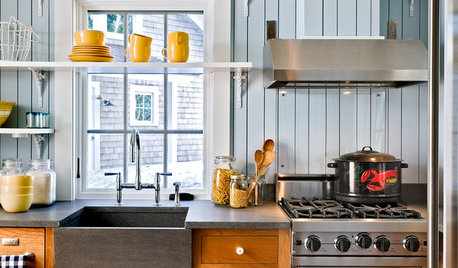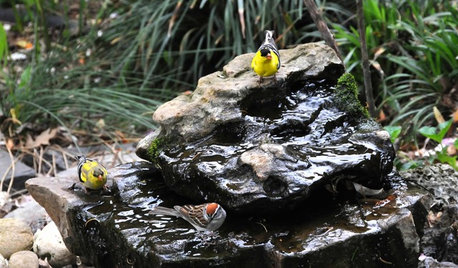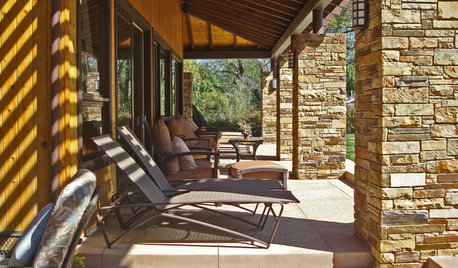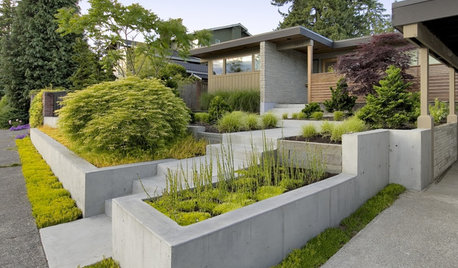Replace liner under rock wall
tilenut
12 years ago
Related Stories

GREAT HOME PROJECTSHow to Replace Your Lawn With a Garden
New project for a new year: Lose the turfgrass for energy savings, wildlife friendliness and lower maintenance
Full Story
MOST POPULAR7 Ways to Rock a TV and Fireplace Combo
Win the battle of the dueling focal points with a thoughtful fireplace arrangement that puts attention right where you want it
Full Story
KITCHEN DESIGNKitchen Sinks: Slate Surfaces Rock for Strength and Style
Go for a sandblasted pattern or keep it simple — slate sinks show quality and promise durability no matter how you roll
Full Story
OUTDOOR PROJECTSBring In the Birds With a Homemade Bubble Rock
An avian expert from Southern Indiana shows how to make a burbling fountain that migrating birds will love
Full Story
ECLECTIC HOMESMy Houzz: Music and Eclectic Finds Rock a Family’s Los Angeles Hideaway
See how a creative couple thoughtfully curates their hilltop home perched in L.A.’s Laurel Canyon
Full Story

REMODELING GUIDES11 Reasons to Love Wall-to-Wall Carpeting Again
Is it time to kick the hard stuff? Your feet, wallet and downstairs neighbors may be nodding
Full Story
REMODELING GUIDES12 Ways to Add Beautiful Stone to Your Home
Rock Your House or Landscape With an Element From Nature
Full Story
LANDSCAPE DESIGNGarden Walls: Pour On the Style With Concrete
There's no end to what you — make that your contractor — can create using this strong and low-maintenance material
Full Story
BUDGET DECORATINGPop Culture Watch: Get a Good Rap With Thrift Store Scores
Eight rooms that rock secondhand finds, in an ideabook inspired by rappers taking YouTube by storm
Full StoryMore Discussions







waterbug_guy
mike_il
Related Professionals
Folsom Landscape Architects & Landscape Designers · Lyons Landscape Architects & Landscape Designers · Mountain Brook Landscape Architects & Landscape Designers · Waunakee Landscape Architects & Landscape Designers · Allentown Landscape Contractors · Brookline Landscape Contractors · Concord Landscape Contractors · East Lake-Orient Park Landscape Contractors · Fairfield Landscape Contractors · Fairhope Landscape Contractors · Hayden Landscape Contractors · Miller Place Landscape Contractors · Wilton Landscape Contractors · Goldenrod Landscape Contractors · East Cleveland Gardeners & Lawn CaretilenutOriginal Author
waterbug_guy
tilenutOriginal Author
waterbug_guy
tilenutOriginal Author